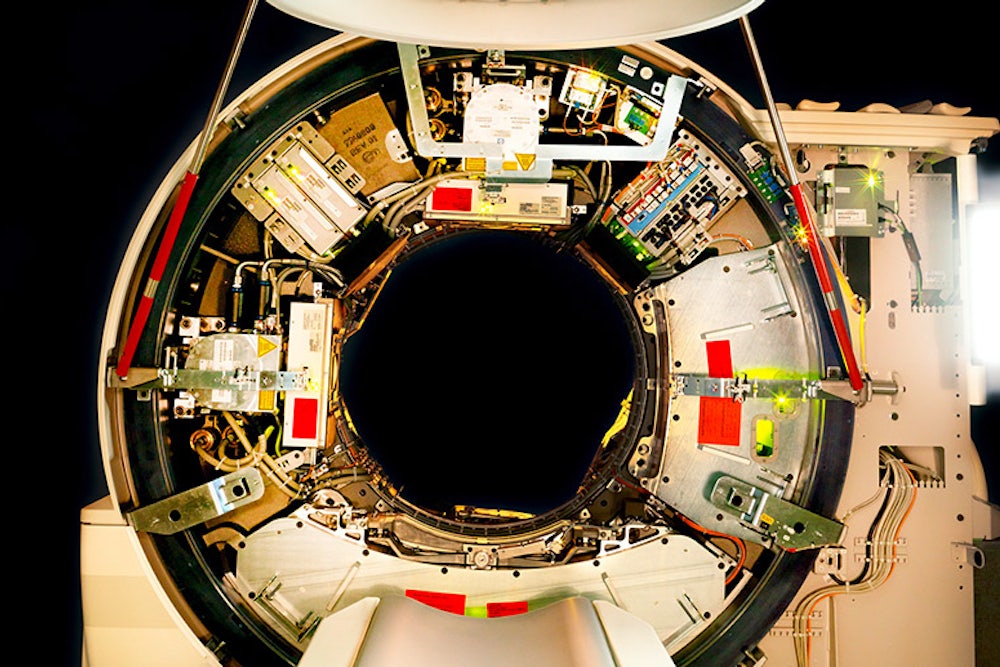Watching over his son in a neonatal intensive care unit, Austrian photographer Reiner Riedler marvelled at the blinking lights, tubes, and humming machinery monitoring and nurturing this room of newborns. This sparked the idea for his project, "The Lifesaving Machines." Thankful and intrigued by the medical technology that helped his son, Riedler began an exploration six month later at a Vienna hospital.
At the outset however, the parameters of this project were not clear. Riedler wondered how he could maintain the dignity of his subjects, while at the same time portraying the power of these machines. “Seeing a man’s open chest cavity with the beating heart inside it undermined both my personal conviction and legitimization to create a photographic work here,” he wrote. In the end, Riedler decided he needed to find another way to tackle this project. “I sought to make accessible a taboo topic without depicting any suffering, and without compromising people in difficult circumstances,” he added.
Riedler began visiting labs and manufacturers that produce the machines. Propped against a black background and isolated from the context in which they’re used, we get to see these clinical instruments in a new light, and get to explore their function, their aesthetics, and their unearthly beauty. From the spaceship-like CT machine to the clunky dialysis machines, this project is a thoughtful meditation on illness, the human body, and the prolongation of life.










Reiner Riedler is represented by Anzenberger Agency. His Lifesaving Machines series will be exhibited at Sous Les Étoiles Gallery in New York from October 30 through December 20th.
